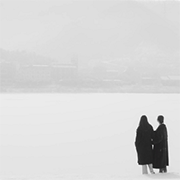- Vegetable
- Oct 22, 2010
-

|
it is good that this is getting more attention
I really appreciate that the show depicted the 1921 pogrom but honestly it's difficult to really do an event of that scale justice without making a program specifically about it. This isn't a knock on the show or anything and they treated it respectfully, it's just such a huge event that has left such a gaping hole in the city's collective subconscious that it's hard to encapsulate.
The massacre wasn't just a massacre, it was a two-day running gun battle between a pair of organized armed groups, one of them a white supremacist lynch mob and the other a black militia organized to prevent the lynching. Both groups included many men with military training and combat experience from WW1; both were quite well armed. One of the reasons the destruction was so total (nearly the entire district was leveled, many hundreds of buildings destroyed; most of the surviving black population of Tulsa was left homeless) was because the whites were sending a message, and the message was 'this is what happens when you fight back'. Greenwood fought like hell and a lot of white supremacists paid with their lives. There's a persistent story in local oral histories of the event that the whites dumped their dead in the Arkansas River rather than bury them, because they didn't want to give the blacks the satisfaction of knowing how many people they'd killed. There's another about a guy named Peg-Leg Taylor who holed up in a storefront with a Springfield rifle and several hundred bullets and shot every white person he saw for six hours.
That's why it's forgotten, and not remembered as a triumph of the good freedom-loving citizens against dangerous insurrectionists, like so many other white supremacist massacres of black people in the South are. There are similar atrocities throughout the old Confederacy whose sites were memorialized with plaques honoring the people who committed them. Not so much in Tulsa, where a concerted effort was made to memory-hole the entire incident. Until fairly recently (like, within the last year or two) there were white people who had lived here their whole lives who genuinely had no idea the massacre had happened at all. That's loving bizarre - a major city, consumed in a giant outbreak of organized violence involving tens of thousands of people, in which a significant portion of that city was completely destroyed and a large number of people were killed, and less than a hundred years later there are people whose families were already living here when it happened and have never even heard of it.
It was covered up because it destroys all the myths of white supremacy. The perpetrators of the atrocity were many of the city's fine upstanding men, prominent community leaders, and they led a mob on a sadistic, blood-crazed rampage. The black population were not violent thugs or fearful, passive victims; they were an organized community who came together, made a plan, and acted on it as best they could. Most importantly, and most dangerously, it proved that the whites weren't invincible. Some of the massacre's victims shot back, and some of those shots struck their targets. Hell, for a little while, until the airplanes and the machine guns got involved on the second day, Greenwood was actually holding the mob back. For a few hours they were arguably winning. David threw his stone at Goliath and he drew blood. If you're Goliath, that's terrifying, because even if you've crushed him for now, you know there's always more Davids, and more stones.
So they erased it. The death toll was covered up, white and black alike. The district itself was almost completely destroyed - not once, but twice. Most of it was rezoned as industrial and developed into factories, and what parts of it survived were later demolished by an urban freeway and a state university campus. The industrial part of it has now been redeveloped into a trendy (white) arts district named after Tate Brady, one of the Klan leaders who orchestrated the massacre. The records were filed away and attempts to officially commemorate the massacre later were suppressed by the city government. It was never taught in schools. Nobody talked about it, at least not publicly. Black people did, quietly, among themselves. They kept the memory alive.
It's good to see it getting the attention it deserves now. I just hope people understand it for what it was - it was not just an act of white terror, it was also an act of black resistance.
For me, the engagement with real history is most of what's good about this show. The destruction of Black Wall Street is an insane part of American history that doesn't get nearly enough attention. All the better that it's told here as a lived, embodied, first-person experience, rather than as dry documentary.
|
 #
¿
Jan 17, 2020 09:02
#
¿
Jan 17, 2020 09:02
|
|
- Adbot
-
ADBOT LOVES YOU
|

|
|
#
¿
May 15, 2024 13:34
|
|
- Vegetable
- Oct 22, 2010
-

|
How is Jeremy Irons considered a lead actor in this?
They should have categories for "Best actor in an ensemble cast"
|
 #
¿
Jul 29, 2020 03:45
#
¿
Jul 29, 2020 03:45
|
|





